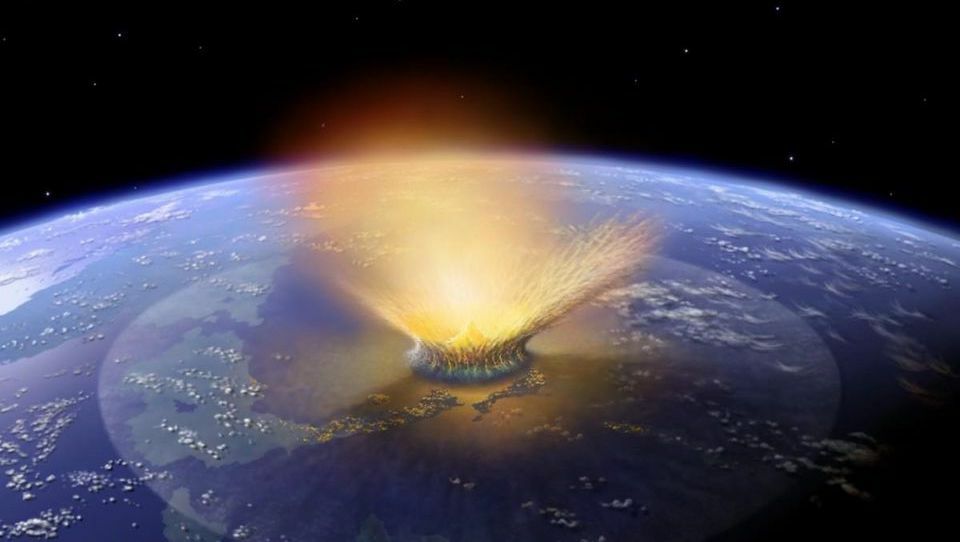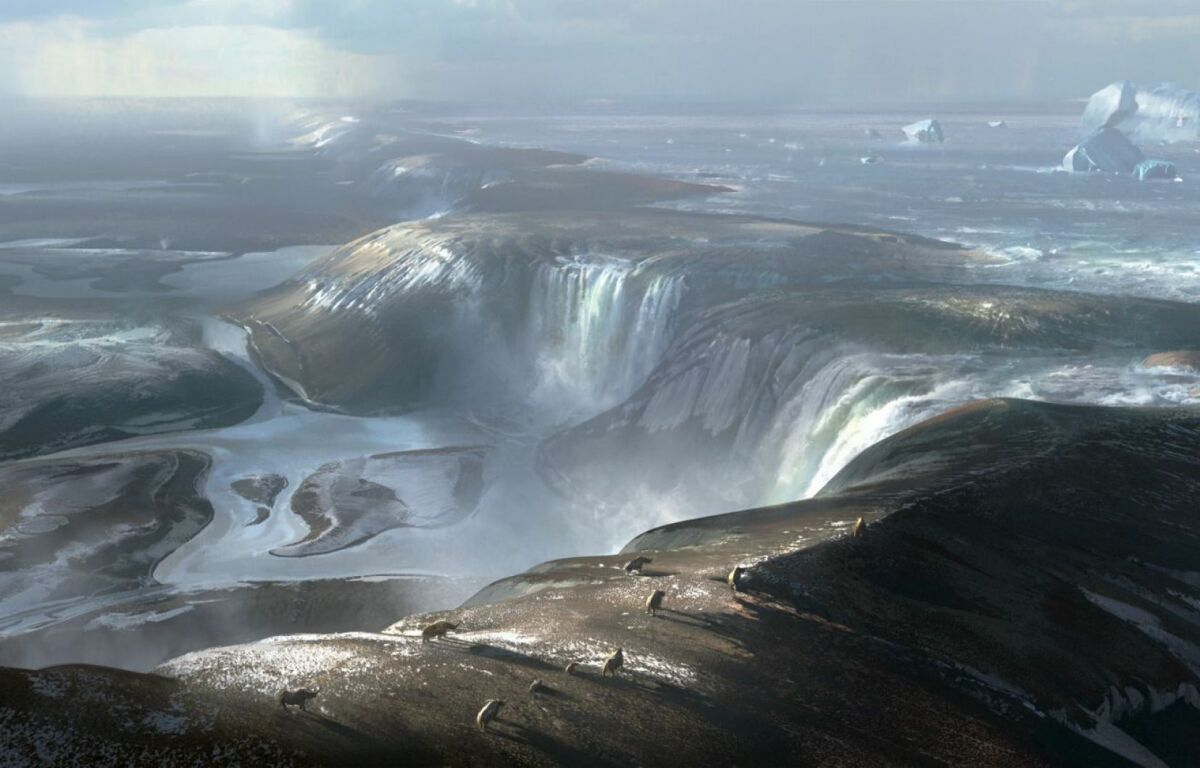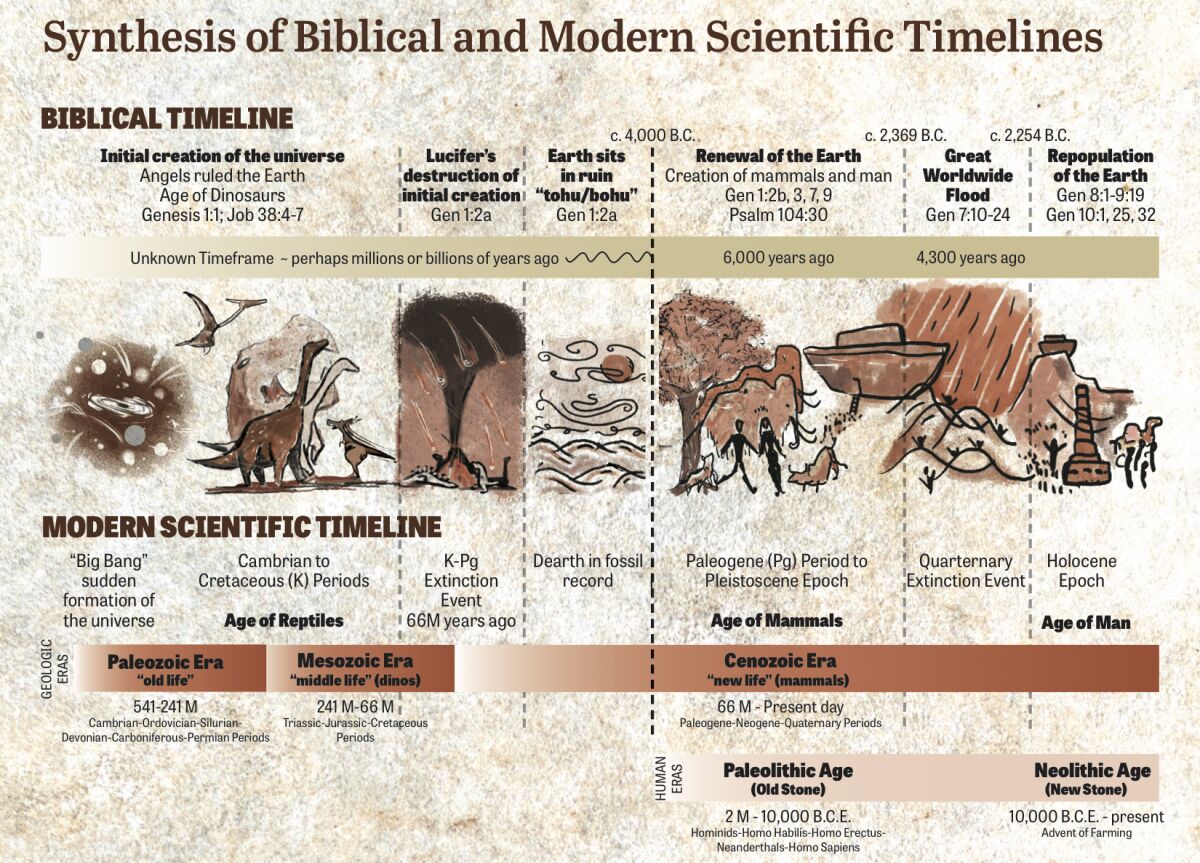Over the past century of biblical archaeology, a plethora of finds have been discovered backing up many of the biblical stories. Thus far, nearly 60 individuals found in the Hebrew Bible have been independently proved through archaeological discoveries, including kings, pharaohs, princes, governors, officers and priests. Archaeology has confirmed dozens of biblical cities, as well as the biblical events that happened within them. It has verified everything from biblical civilizations and major conflicts to minor skirmishes, cultural customs, dietary details, clothing items, architectural elements and even common sayings. Bible minimalists and skeptics have constantly had to adjust their arguments as new discoveries come out—such as the following:
- Belshazzar was a fictional character. Archaeological proof discovered in 1854.
- The Hittite Empire never existed. Archaeological proof discovered in 1906.
- King David was a myth. Archaeological proof discovered in 1993.
For the believer, these finds are held up as proof of the veracity of the Bible, helping confirm its divine inspiration by God. In simple terms, they help “prove the Bible true.”
Such a statement, though—that archaeology “proves the Bible true”—is jarring to the skeptic. Because no matter how many biblical individuals are discovered—no matter how many inscriptions are uncovered—the fact is that the Bible cannot, as a whole, be true. Because, they argue, Genesis.
The age of Earth. The dinosaurs. The Ice Age. Prehistoric man. Scientific discoveries, especially since the publication of Darwin’s On the Origin of Species, have proved the timeline of Earth and the universe is completely at odds with the Bible.
Or have they? How sure are we of what the Bible actually says? And how confident can we be in interpreting the scientific data?
6,000 Years Vs. 13,820,000,000 Years
We start off with the “elephant in the room”: But the Bible says the Earth and universe are 6,000 years old. That’s impossible. What about the dinosaurs? The measured expansion of the universe? The fact that light has taken billions of years to reach us from the furthest visible stars?
A common religious view is that the Bible says the Earth is 6,000 years old. The dinosaurs were wandering around with man, but were killed off by the Flood. Some even claim that dinosaurs were on board the ark and survive to this day, deep within the African jungles. This standpoint—in some form or other—is known as Young Earth Creationism.
But the Bible doesn’t say that the Earth was created 6,000 years ago. Genesis 1:1 simply states: “In the beginning God created the heaven[s] and the earth.” Most overlook this verse, jumping straight to the “days of creation” starting in verse 3. But there are two vital verses that come before the “days of creation” even begin! The Bible doesn’t say, 6,000 years ago, God created the heavens and the Earth. Simply, In the beginning, God created the heavens and the Earth.
Looking at this verse objectively, it could be referring to a time millions of years ago. Or perhaps even 13.82 billion years ago (the estimated age of the universe, measured in 2013 with the European Space Agency’s Planck spacecraft). There is no time stamp.
But notice the following verse. This is what took place after God created the heavens and the Earth. “And the earth was without form, and void; and darkness was upon the face of the deep” (verse 2; King James Version).
This may come as a surprise to some, but look at what we already have here before the seven “days of creation” begin. We have heavens. We have an Earth. We have water. Light and darkness. All described as being created by God before the seven days of creation!
But look again at verse 2. This is where some real detective work begins. After verse 1, the creation of the heavens and the Earth, what happened? “And the earth was without form, and void.” The words “form” and “void” in Hebrew are tohu and bohu. They describe a state of total chaos and utter desolation. But really? Did God create the world in a state of chaos and destruction? Logic says no. And the Bible categorically says that He did not! Isaiah 45:18 is a key verse in this context. It says that God “formed the earth and made it; he hath established it, he created it not in vain …” (kjv). The word vain here is the Hebrew word tohu, or “chaos.” God did not create it in a state of tohu! Yet Genesis 1:2 says that after God created the Earth, it became “tohu”!
So what happened?
A ‘Nuclear’ Holocaust
In short, Genesis 1 describes two creations of the Earth! The first is in verse 1. “In the beginning God created the heavens and the earth”—the creation of the material universe, which could have taken place millions or billions of years ago—the Bible just doesn’t say. This original creation of Earth contained the world of dinosaurs and such prehistoric beasts and sea monsters that, if they were around during the age of man, would have quickly rendered him extinct. And this was the world that, as science has proved, came to a mysterious, cataclysmic end! Evidence exists of vast, planet-wide destruction, apparently relating to asteroid impacts, as well as volcanic eruptions and sea-level changes. The sedimentary stratum line of this destruction layer has been discovered at sites all around the world. It is noted to contain high levels of iridium—a metal rare on Earth but common in asteroids. In scientific terms, this disaster is technically known as the Cretaceous-Paleogene (K-Pg) Extinction Event. In layman’s terms, it is the disaster that wiped out the dinosaurs.
And the Earth became tohu and bohu—without form and void—utter chaos and desolation—and darkness was upon the face of the deep. This account of total darkness matches up with the “nuclear winter” described by scientists that would have been caused by a massive asteroid impact. This impact is most commonly associated with the massive Chicxulub crater found in the Gulf of Mexico. This crater measures 150 kilometers wide and 20 kilometers deep, and it relates directly to the same period of destruction strata discovered around the world. Estimates vary wildly, but the energy released by the impact of this asteroid could have been up to 921 billion times that of the atomic bomb dropped on Hiroshima.

And again, the scientific evidence of destruction matches up perfectly with the biblical account of a primordial destruction. Without going into too much detail here, the Bible describes a massive angelic rebellion that occurred following the original creation of the Earth, yet before the creation of man. This is described, in part, in Isaiah 14 and Ezekiel 28—you can read more about it in our article “Dinosaurs, the Bible and a 6,000-Year-Old Earth?” This angelic rebellion wreaked havoc on the Earth, sending prehistoric life forms to their extinction and bringing about the end of what scientists call the Mesozoic Era. This K-Pg Extinction Event is typically dated by scientists to circa 65 million years ago. This might be right or wrong—again, the Bible gives no time stamp.
Cenozoic—‘New Life’
Back to Genesis 1:2 (kjv). “And the earth was without form, and void, and darkness was upon the face of the deep. And the Spirit of God moved upon the face of the waters.” We have here a destroyed, wasted planet. And so what does God do now? He determines to re-create the Earth—and does so, in the “creation week” described in the following scriptures! That is the very simple, logical answer about the creation week—it is, in fact, a re-creation! A re-creation of the “face” of the Earth—not the original creation of the entire Earth, as already described in Genesis 1:1. This is also shown elsewhere in Scripture: “Thou sendest forth Thy spirit, they are created; And Thou renewest the face of the earth” (Psalm 104:30). Just as in Genesis 1:2, the face of the Earth was what needed re-creating—not the entire planet.
Thus we see that Genesis 1:1-2 contain the very briefest of summaries of the primordial universe and Earth. Millions or billions of years could have transpired between verses 1 and 2. Likewise, millions of years could have transpired between verses 2 and 3. There is no time stamp. But from this point on in the biblical account—from the re-creation of the face of the Earth—we do begin to have “time stamps.”
Following the end of what scientists call the Mesozoic Era, we come to the next era of planet Earth—the one we are still living in—known as the Cenozoic Era, meaning “new life.” In layman’s terms, the Cenozoic Era is essentially the “age of mammals.” This era begins with the creation week—or should we say, re-creation week.
Here, in six days, God stabilizes and re-creates the Earth. Each part of the re-creation is set within a day period (Genesis 1:5, 8, 13, 19, 23, 31). “And God said: ‘Let there be light.’ And there was light.” This starts off the re-creation week, clearing the darkness that covered the destroyed Earth and wider, damaged universe. This week of renewal culminated in the creation of man on the sixth day, and finally the establishment of the Sabbath on the seventh (Genesis 2:2-3). God designed this world specifically for man—a new divine plan, to make man “in our image, after our likeness” (Genesis 1:26). This would be the world of mammals—a world within which man could thrive and have “dominion,” as the same verse says. Man certainly could not have had dominion over a world of dinosaurs.

So we have the period of “new life,” within which we now live: The Cenozoic Era—the mammalian period—prehistoric man and, primarily, warm-blooded animals. This includes the creatures often regarded as “Ice Age” animals—woolly mammoths, giant sloths, sabre-toothed tigers, and my favorite, glyptodonts. A seven-day “creation week” marks the start of this period. (Scientists actually have difficulty explaining the rapid explosion of unique life at the start of this period.) And the Genesis 5 genealogy beginning with the first man, Adam, makes it clear that the creation week occurred roughly 6,000 years ago.
Stop right there! say the critics. 6,000 years ago? Man comes on the scene—the mammalian period begins—Ice-Age animals appear only 6,000 years ago? Don’t scientists say these came on the scene millions of years ago? “Modern” man 200,000 years ago? What about all of the Neanderthal, Denisovan, Homo human ancestor bones that have been discovered?
A Really Bad Date
Put simply, dating methods are at best unreliable, at worst disastrously wrong. We haven’t spent time examining the scientific dating of the dinosaurs, as that period isn’t time stamped in the Bible, and thus is irrelevant. What is clear, from the Bible as well as scientific research, is that the Earth and universe are much older than 6,000 years. As stated above, this is especially made clear when considering universe expansion, star decay and travel time of light.
Dating material remains on Earth, however, is another kettle of fish.
Here’s a brief explanation. Dating methods, such as carbon, uranium, and samarium dating, are not reliable over vast spans of time. That’s not to say they just give wild data (although that can sometimes be the case). But they are chiefly unreliable because they are calibrated based on assumptions. They are based on the theory of uniformitarianism—the belief that the Earth was formed and shaped by very slow, gradual changes—as opposed to catastrophism, the belief that the world was shaped by dramatic and sudden events (this is the biblical view). Modern scientific dating is based on the assumption that the Earth is, and always has been, operating under a “fixed system”—essentially, that it is now as it always has been.
Radiometric dating works by analyzing the prevalence of certain radioactive isotopes. It relies on the assumption that the amount of these isotopes on the Earth has remained roughly constant. That’s a supremely risky assumption to make.
Actually, scientific research has been proving that this assumption is not just slightly, but utterly, wrong. Regular-occurring solar flares, as well as fluctuations in the Earth’s magnetic field, have been shown to directly and significantly affect the prevalence of these isotopes. Even simple changes in the seasons have been shown to affect them. And the testing of nuclear weapons over the past 80 years has caused serious issues with properly reading radiocarbon dates due to even minuscule amounts of radiation particles spreading all over the Earth’s atmosphere.

Generally, these issues haven’t led to any significant response from the broader scientific community with regard to dating methods. Isotopic dating is the much-cherished baby of evolutionary scientists attempting to plot animal development over millennia. Certain measures have been undertaken to correct the errors, such as revamping dates found to be 10,000-plus years off, to throwing out some dates entirely. Still, radioisotope dating is often way off the mark, generally providing far-older-than-reality dates. One example is of a Himalayan geological event that was given a date 1,900 percent greater than that found by later research (an especially significant discrepancy, considering the date is in the realm of millions of years ago).
It is inherently faulty logic to assume a constant, stable system. Especially considering “catastrophism” events are known to have pockmarked Earth’s past—the K-Pg extinction event a case in point.
What else could throw off the stability of the Earth’s systems—something that could dramatically affect dates given for man’s earliest history? Perhaps something like a worldwide flood?
Biblical chronology puts this catastrophic event as having happened nearly 4,500 years ago. Such an event would cause earlier-attributed dates to be significantly exaggerated. It is known that moisture affects carbon dating results. Water causes the leaching of compounds and, if unaccounted for, can cause greatly exaggerated dating results. (More on the Flood further down. Surprising as it may seem, it fits nicely with another part of the modern scientific timeline.)
The biblical description of the first nearly 2,000 years following re-creation week actually indicates a world much different to today. A case in point is that it describes lifespans for mankind of nearly 1,000 years. For this to have been possible, Earth’s ecosystems would have been very different. Perhaps animal lifespans were likewise extended. And considering such incredibly long lifespans, would this not in itself artificially stretch modern dating for the period of very early man? Extremely long life may also play into the pronounced, “overdeveloped” features displayed by man’s early ancestors.
The field of isotopic dating has been around for a while. But now the field of genetics has something to say about man’s earliest history.
Adam and Eve
Enter “mitochondrial Eve” and “y-chromosome Adam.” Yes, geneticists have proved that all mankind descended from just one man and just one woman! Scientists date this “Adam” and “Eve” to roughly 200,000 years ago on the evolutionary spectrum (though the proposed date has regularly yo-yoed, from between 50,000 and 500,000 years ago). But when considering pure genetics, rather than shotgun-style dating, the genetic evidence points to these two having lived somewhere around 6,000 years ago! Research by geneticist Dr. Sanford and Dr. Carter on this subject is discussed in detail in our article “The Case for Adam and Eve.” The article examines the surprisingly large amount of scientific evidence for the biblical couple—from genetics to morphology to archaeology.
There’s more. Because geneticists have also (to their admitted disbelief!) found that nearly all animal species also trace back to a single pair!—pairs again dated sometime within the past 250,000 years. Scientists generally attempt to explain this as a “population bottleneck”—the result of a massive extinction event somewhere along the evolutionary timeline (so much for uniformitarianism!). Again, the dating can be taken with a grain of salt. But how remarkable! What about evolution? The researchers who conducted the above-linked study were quick to follow up—lest any should think otherwise—that their “study is grounded in and strongly supports Darwinian evolution, including the understanding all life has evolved from a common biological origin over several billion years.” Their “clarification,” though, rings rather hollow.
The developing field of genetic research is proving problematic for the evolutionary theory. It has already proved that the ancient quasi-human Neanderthal “species” is actually 100 percent “human”—as closely related to modern humans as Germans are to Chinese. Actually, all those ancient human species—Neanderthals, Denisovans, Homos—are simply one and the same “species.” And they fit nicely within the biblical account of the antediluvian world.
The Antediluvian World

There are several particulars about the antediluvian world, described in Genesis 6, that match with the archaeological record. Genesis 6:4 describes a race of “giants” living on the Earth prior to the Flood. Unlike our modern idea of giants, the word here implies giants in strength, individuals of great physical might. The description actually matches the physique of the ancient Neanderthals—a large-boned, powerfully-built, stocky race of humans.
The Bible also describes the antediluvian world as one of widespread violence, debauchery and intermarriage (it is for these reasons that the Flood was sent). Archaeology and genetic research have proved this to have been the “state of affairs” among prehistoric man. Human flesh was a common part of the diet. And genetics have proved—as stated by the following gripping headline—that promiscuous early humans interbred multiple times in “World of Debauchery.” Research has shown that—just as the Bible describes—the different human groups, primarily Homo Sapiens, Neanderthals and Denisovans, were all “interbreeding” (see Genesis 6:2-4).
(Something can even be said for the biblical account of pre-Flood longevity. Take a look at our article here for archaeological and biological evidence backing up the biblical account.)
The Great Deluge
To sum up: Genesis 1:1-2 match up beautifully with the emergence of the universe culminating in Earth’s Mesozoic Era—the “age of the dinosaurs”—and the ensuing Cretaceous-Paleogene extinction. Genesis 1:3 onward marks the re-creation of the Earth—the age of man and mammals—the start of the Cenozoic Era. This period began 6,000 years ago—the dating, as stated above, being critically flawed and especially thrown off by a worldwide Flood that the Bible says occurred some 4,500 years ago.
We have mentioned the presence of the massive so-called “Ice Age” animals on the scene at the same time as early man—shown through butchered remains, etc. What happened to these creatures? What happened to Homo Sapiens’ relatives, the Neanderthals and Denisovans? Why did they all disappear?
There is recognized another extinction period—scientists call this the Quaternary extinction event. The reason for this extinction is much debated, but it has been linked to glacial activity, increasing temperatures, a corresponding rise in sea levels, floods. Could this have been the Flood of Noah’s day? A flood which, as Genesis 7:20-21 say, covered the mountains and killed all flesh that moved upon the earth—minus representative species from each genus that were taken aboard the ark? And could this flood be the reason for such piecemeal, scattered evidence of very early man—a skull here, a finger bone there?

It would only be logical that all preserved man-made buildings and “cities,” discovered by archaeologists, would date to some time after the Flood. Anything before the Flood would have been largely obliterated. Jericho, for example, is considered one of the oldest cities ever discovered. The earliest settlement is traditionally dated circa 10,000 b.c.e. This dating actually just follows the traditional end date for the Quaternary extinction event. The earliest religious settlement ever discovered is considered to be Göbekli Tepe—a site in southeast Anatolia, Turkey. The site is dated circa 10,000 b.c.e., and peculiarly, features all kinds of animals carved onto its ritual monoliths. Is it coincidence that this site also emerged just following the Quaternary extinction event, and not far from Mount Ararat, where the Bible says that the ark landed and unloaded the surviving humans and animal species?
It is from this period that civilizations begin popping up all around the Middle East. Regarding the date for this extinction event and the emergence of newfound cities and civilizations—circa 10,000 b.c.e.—we again reference the above-mentioned issues with dating. (Although, the closer to present these dates are, the more accurate they become.) We mentioned the likely relationship between longevity and artificially extended pre-Flood dates. It is interesting to note that after the Flood, long lifespans weren’t suddenly cut short—the decline was gradual. People still initially lived up to as much as 500 years old. This, together with the receding waters and prevailing environmental conditions, could elongate dates given—though not as much as before the Flood.
The Bible places the Flood at circa 2,500 b.c.e. It is only following this period that we begin to have a really clear picture of ancient advanced human civilizations. Ancient texts begin emerging around the world at this time—strangely (or not so strangely?) describing parallel creation stories—a worldwide Flood story as well as a tower/confusion of languages story.
And that is no accident.
Science and the Bible: A Synthesis
So is the earliest biblical history incompatible with what has been discovered by science? A resounding no! And it’s not about changing beliefs to fit the science. Our organization has been writing about this subject for some 60 years now—before much of this new scientific research has emerged. It’s simply about reading the Bible without preconceived bias—without forcing interpretation into it. We can dispense with the idea that the book of Genesis is some kind of murky, ascientific attempt to describe a 6,000-year-old Earth and universe by writers ignorant of dinosaurs or the Ice Age. Contrary to popular belief, the Bible isn’t anathema to science! (Actually, many modern scientific discoveries—from fields of medicine to astronomy—are only rediscoveries of knowledge already contained in the Bible. See our article “The Bible Scoops the Scientists” for more detail.) Scientific discoveries over the past several centuries have only served to confirm what was only in the Bible already.
Setting aside the arbitrary dating methods, when comparing the modern scientific timeline of Earth with the biblical timeline, we see a remarkable synthesis of events. This is shown on the illustration below (click to enlarge).

Scientists are at a loss to describe many of these events. The Quaternary extinction event. Man and animals, descending from a single male and female ancestor. The explosion of new life at the start of the Cenozoic Era. The extinction of life at the end of the Mesozoic Era. And the very origin of life and the universe.
The Bible, however, describes all of these things. It’s just a matter of taking it for what it actually says.

